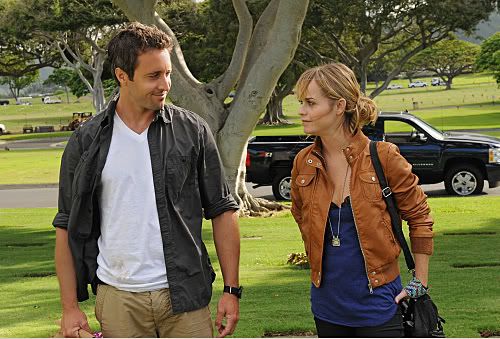By Pam
I’ve often heard Alex O’Loughlin say he performs most of his own stunts. I wondered how he was able to master some of the stunts he has done, particularly in a fight scene. How does one throw a punch and not hit someone, let alone take the punch and appear as though it hurts? Is it just good acting?
Alex, as you may know, attended NIDA where he received a Bachelor in Acting. The acting course is three years long and includes classes such as acting techniques, accents, movement and relaxation methods. In addition, stage combat is offered as a several week course. The Sydney Stage Combat School is called in for this purpose. They instruct the acting students in unarmed combat and single sword combat. Since Alex would have to be cast in a period film for us to see his swashbuckling skills, I will concentrate on unarmed stage combat for now.
Stage Combat is the practice of creating the illusion of physical combat for theater, film or television.
When a script calls for a physical fight stage combat is employed. The primary objective of stage combat is to create a visual and auditory picture which gives the illusion of ‘real fighting’, with the overriding concern being that no one gets hurt. Stage combat can include any form of choreographed violence. It all depends on the dramatic requirements of a script and the creative choices of the Director and Fight Director. The combat phase of a rehearsal is referred to as a ‘fight rehearsal.’
Choreography is typically learned step by step and practiced at first very slowly before increasing to full speed. It is preferable for actors to have as much training and experience as possible. A ‘fight call,’ or a brief rehearsal before the fight is performed, is to increase muscle memory and produce more effective dramatic action.
Choreography is typically learned step by step and practiced at first very slowly before increasing to full speed. It is preferable for actors to have as much training and experience as possible. A ‘fight call,’ or a brief rehearsal before the fight is performed, is to increase muscle memory and produce more effective dramatic action.
Here are the common Stage Combat techniques actors are taught:*















